Top: Elephants have roamed towns and villages in Grand Cape Mount County in the last five years. The DayLight/Harry Browne
By James Harding Giahyue
Editor’s Note: This is the second part of a series on the human-elephant conflict in Liberia.
GBANJALA, Grand Cape Mount County – Daniel Sando and his family live in a roadside house on the route to Lofa Bridge. The other people who lived here moved to other communities after elephants overran their farms for several years.
“People have been migrating that is why you see the town poor like this. If I can assume, more than 50 people have left the town,” says Sando, a resident of Gbanjala in the Gola Konneh District. He used to be a farmer but years of loss of his crops turned him into a charcoal maker.
“[The people who have left] have been advising us to leave but we don’t want for government to see that people [are] migrating,” Sando tells The DayLight at his charcoal worksite.
Evidence of the elephants rampaging lay bare in Gbanjala. There are trampled potato gardens, uprooted orange and mango trees with stripped barks, and even the ruins of a mud-brick hut.
The same thing is playing out in Norman Village, a few miles away. Families have pulled out of the community, including one earlier this year, according to residents.
Varney Gopee, an elder of Manna Clan in the Gola Konneh District, whom people call “town owner,” arrives. Gopee takes my motorcycle-taxi driver and me to his farms—actually, the ruins of his farms.
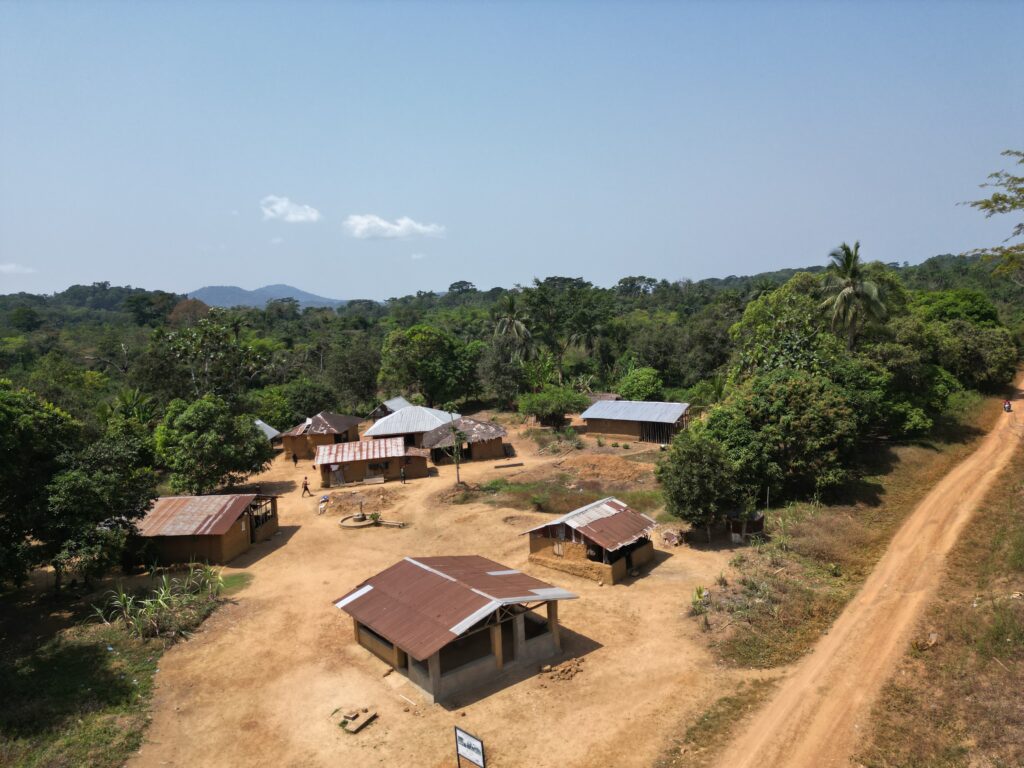
In no time, we get to damaged farms that are divided by an old road leading to Bo Waterside. Gopee guides us on a tour of the one on our right, the one with more “devastation.” Loads of elephant dung decorate foliage of uprooted plantain and banana bushes and pineapple plants. The towering mammals had raided Gopee’s farms just days earlier.
“The people who fled the village did so because of the same devastation,” Gopee says. He holds up an elephant dung he picked up minutes earlier beneath a few remaining plantain trees. He says the family had relocated to a place called Morgan Farm.
“They said they cannot live here without farming because that is their livelihood,” Gopee adds.
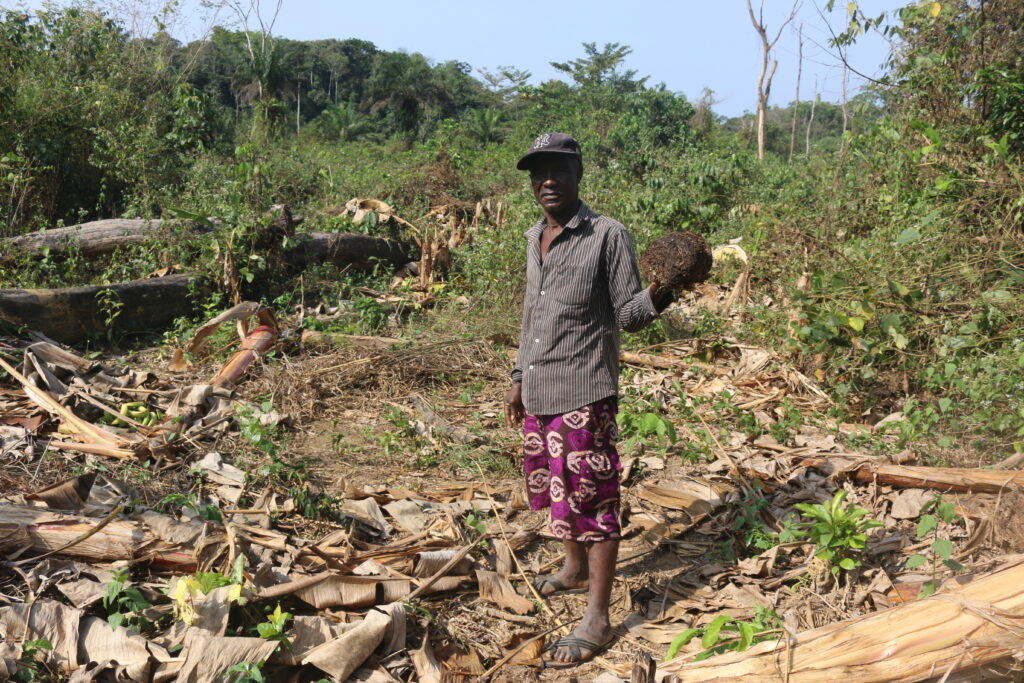
Gbanjala and Norman villages might be two of the most recent settings elephant ravaging of villages. However, Grand Cape Mount County has been a frontline for years of what conservationists call the human-elephant conflict. Media reports suggest the earliest incident of the crisis may have occurred in 2005, and the situation intensified in the last five years.
There are no official casualty figures so far. However, several persons and elephants have been killed, a great number of crops eaten or crushed, and homes damaged. Varguay and Gbanjala are on the front. Benduma, Mafala, Managodua, Kpelle village and Bassa village feature high on the list. Conservationists say there are between 350 and 450 elephants in the region.
‘They came too soon’
Varguay, also in Gola Konneh, is likely the hardest-hit community. The herd of elephants has eaten mango trees and munched on the barks of other trees. The farms around the town and backyard gardens feature regularly on their menu. The annual destruction of their crops has compelled farmers to become miners. Some of its residents now work as casual laborers elsewhere. Others have sworn to never return, according to Manna Jallah, the town chief of Varguay. He says a family had seen a herd of the tusked, unwelcomed visitors a few days ago in their garden.
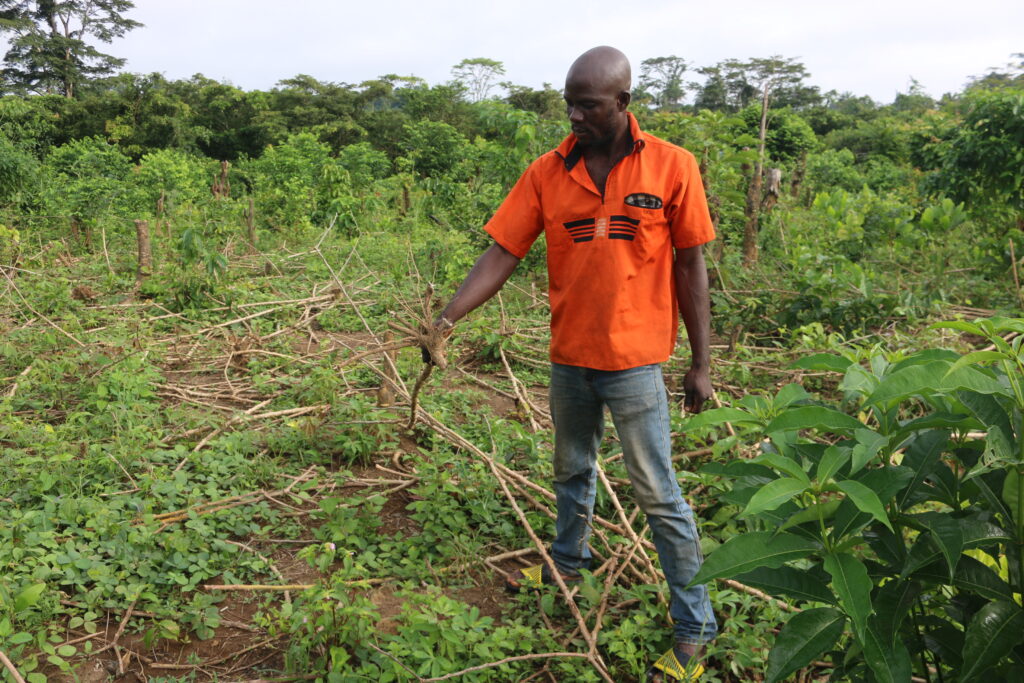
______________________________________________________
More on Elephants:
_______________________________________________________
“Some people are going to the other town called Gohn,” Jallah says. “They [left] the whole Varguay and they’re living there. About 20 people have moved.”
It turns out, Mafala and Benduma are rivaling Varguay for the unfortunate profile of the battlefields this year. Though elephants have visited these communities before, residents have seen them regularly this year.
“When they came they passed through the river and entered the farm,” says Aaron Quaye, a 40-year-old farmer in Benduma in the Porkpa District. The Mafa River separates his plantain farm from Mafala. The elephants have visited Quaye’s farms three times a year, crushing pepper and garden eggs in pursuit of plantain and banana trees. The herd leveled the crops to the ground on its third visit there.
“I am worrying this year,” he adds.
Mary Johnson, 59, Quaye’s neighbor, suffered the same fate. A herd of elephants ravaged her farm in Mafala three days ago, and a friend spotted them again this morning. “And they get a certain system in them when they eat your food…, they will dig some and park it for you just like a human being,” Johnson says.
But Johnson’s farm is not the worst hit in Mafala. It is Oretha Garhanah’s. When Garhanah saw a pile of cassava two days ago, she feared someone had stolen her crops. She cried out loud, calling the attention of adjacent farmers. It was after another farmer spotted an elephant dung that she realized it was the giant-sized mammals. They had paved a road through the farm, trampling her crops.
“This year [they came soon],” Garhanah tells me at her farm next to Johnson’s. “In previous years, it came during harvesting time or rainy season time.”
Garhanah is just one of many farmers in that area whose farms the herd damaged. Elephant dungs decorate the remnants of the farms. There are more crushed crops than standing ones on the farm belonging to a woman named Adama Kromah. The same goes for Junior Brownell, Momo Smallwood and Arthur Sackie. The elephants left behind their footprints in a swamp nearby Sackie’s farm.
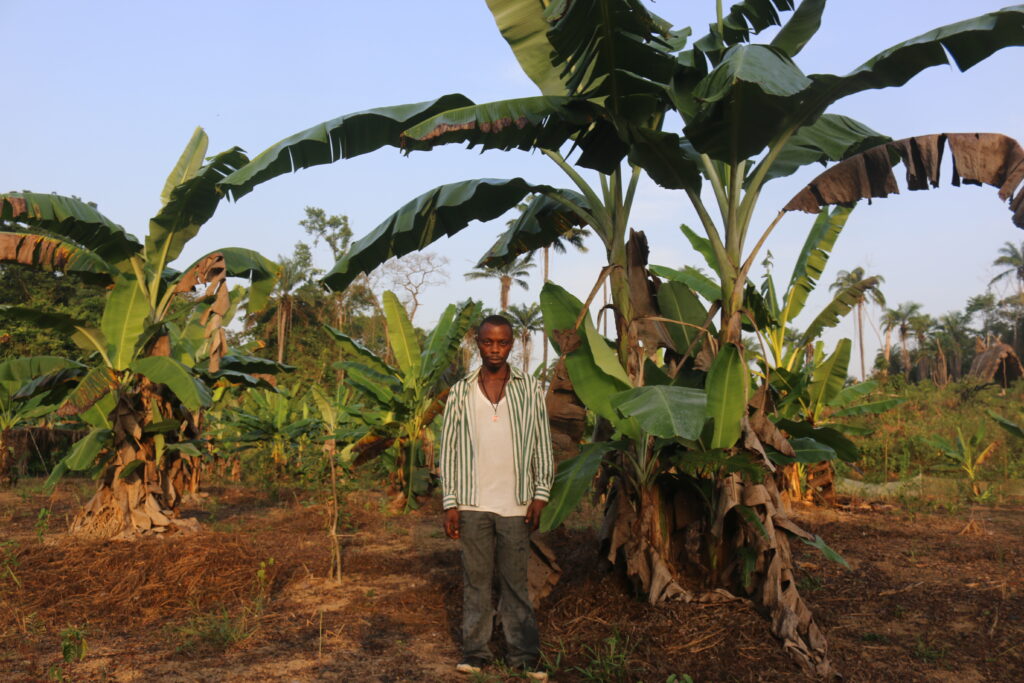
Farms’ ruins and locals’ accounts match the behavior of elephants, which eat up to 375 pounds of food daily. An adult elephant can drink up to 55 gallons of water in less than five minutes, according to Sea World Parks, a U.S.-based park company established in 1959. Elephants are also fond of mud, which they use for protection against the raging sunlight and parasites such as bugs and ticks.
Dung, Despair and Death
Years of elephant disturbances have led to anger among villagers. In a meeting in early 2022, a preacher put elephant dung on the table for government officials to smell. Rev. Francis Pratt was angry that the Forestry Development Authority (FDA) had allegedly failed to protect them from the elephants.
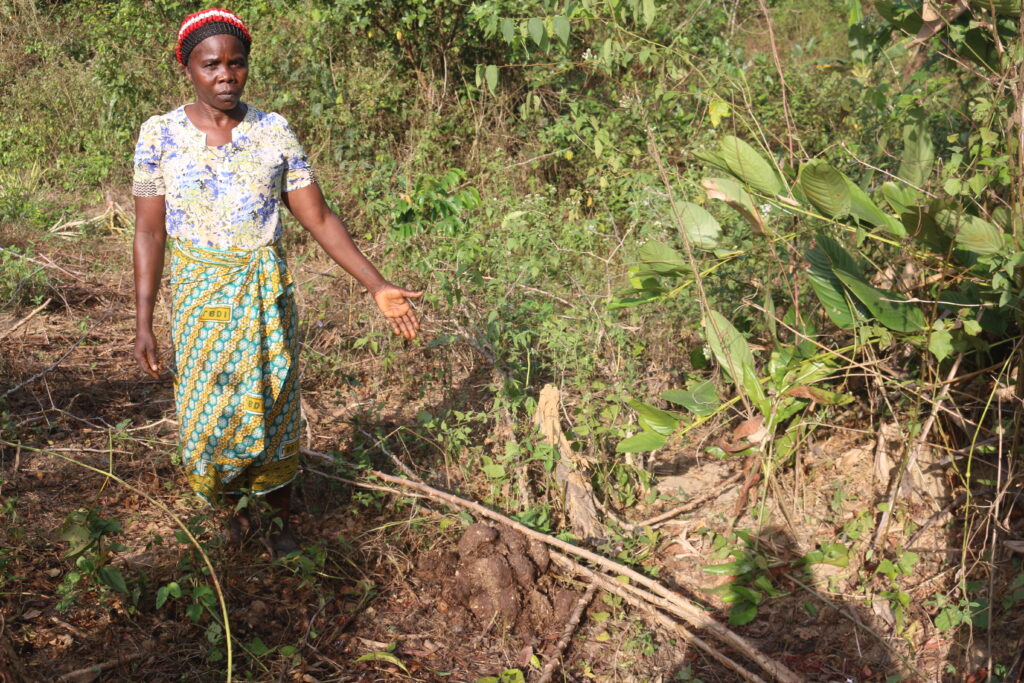
“The feces were right on the ground I took it and I said, ‘See—this the odor—how stink it is?’” Pratt recalls. “‘You can see we’re bearing this and then every day you say you’re coming.’”
There is currently no official policy to address compensation for villagers who have lost properties in the conflict. Abednego Gbarway, the head of the FDA’s wildlife department, did not respond to emailed questions. Saah David, the national coordinator of REDD+, says the FDA is working with actors in the sector to mitigate the human-elephant conflict in the country. REDD+ means reducing emissions from deforestation and forest degradation among other things.
The Pratts’ misfortunes typify the casualties of Varguay in this crisis. After leaving farming in 2018, Rev. Pratt started backyard gardens but the elephant pursued them. His mother, Yassa Zaza now lives in Monrovia, conceding to years of loss of her crops. His daughter, Famatta Pratt, and her husband, James Mulbah, also experience regular raids on their gardens. Like her father, Famatta Pratt has been outraged.
“I will kill the elephant so that they can put me in jail, and feed my children,” an angry Famatta Pratt told me in 2020. “That is the only way they will come to our rescue.”
That feeling resonates with many farmers here, among them George Fayiah, a 28-year-old farmer in Mafala. He lost a large farm with rice, pumpkin, corn and cassava overnight. “If no way for [the FDA] to help us, then we will find means to get rid of [the elephants],” Fayiah says.
Such threats could be more than rants, as people have been killing elephants in Liberia for decades. In 2018, an elephant killed a man named Simeon Henry near Varguay. The clinic next to the Pratts’ residence announced him dead upon arrival. The following year, an elephant reportedly wounded by a poacher killed an elderly man in Gbarma, Gbarpolu County. In October 2021, two men allegedly killed a pair of tuskers in Lofa, according to the Liberia News Agency (LINA). LINA also reported two years earlier that police arrested a hunter for “killing” four around the Sapo National Park in Sinoe. Liberia has banned the killing of elephants in a move to protect the animals. Offenders face up to US$10,000 or a maximum four-year prison term.
Hunting elephants alongside logging, mining and agricultural activities that encroach on elephants’ territory are root causes of the conflict, according to conservationists. They have contributed to the reduction of the elephant population in Liberia, other parts of Africa, and Asia. As the result, African forest elephants (Loxodonta cyclotis) are now critically endangered.
“There are too many human activities in the forest,” says Dr. Tina Vogt of the Elephant Research and Conservation (ELRECO). The German NGO based in Liberia works in the region, which hosts a bevy of mining licenses and logging contracts and a horde of artisanal loggers. It has trained 296 farmers
“We need to give the animals a rest and the space,” Vogt adds.
Goat, Horn and Honeybees
Locals say they have tried several methods to drive the elephants away but have not succeeded. Farmers have burned old tires and peppers, clanged pots, beaten drums, blown horns and bleated like goats.
People here believe bleating like a goat can scare away the elephants. Local legend has it that a goat defeated an elephant in an eating tournament way back, with the latter fearing the former ever since. The elephant, the story goes, finished up a huge pile of food in no time. The goat, on the other hand, kept chewing effortlessly up to the next morning and was declared the winner. However, as interesting as the story is, it appears, the elephants of Grand Cape Mount place their survival above any folklore.
Elephant raids are taking a toll on livelihood in towns and villages, farmers say. The United Nations estimates that 70 percent of Liberians depend on agriculture. Amid climate change, the elephants’ raids make it much harder for rural communities to survive.
“Elephants have spoiled all these things,” says Mammy Liberty of Bassa Village, who lost an eight-acre rice farm earlier this year. “I have three children; they dropped from school because I have no support.”
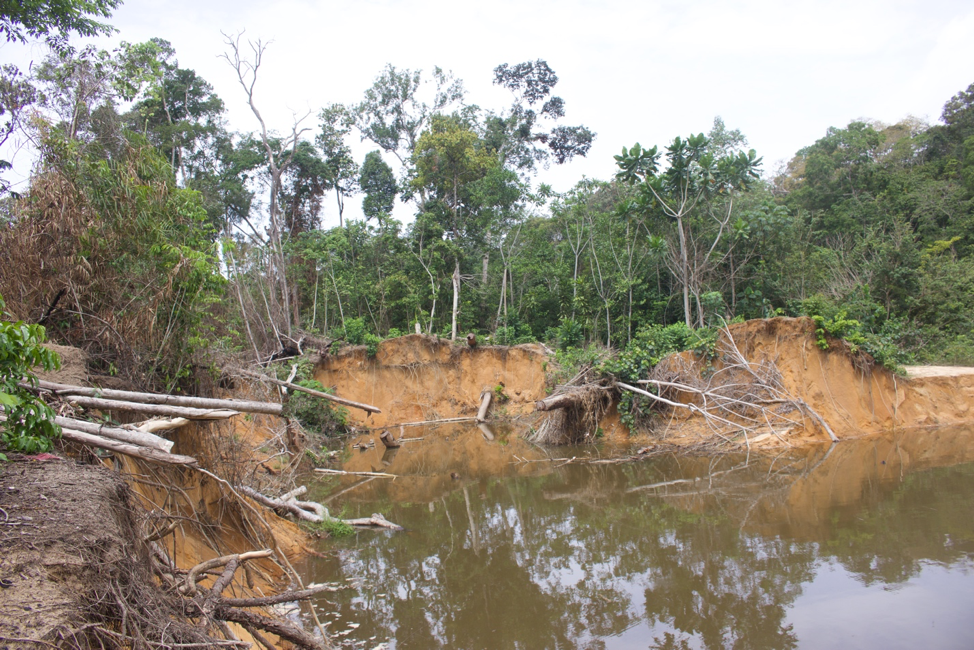
Vogt says farmers may need to understand the problem better. In 2021, ELRECO started a program in northern and western Liberia and has now trained nearly 300 farmers in human-elephant-conflict mitigation methods. She says the methods have proven to work, and if they do not work, it is mostly because the methods are not applied correctly and persistently. She added farmers need to apply the elephant-repelling methods better, adapt to living with the animals as they do with other animals, and change their way of farming.
“They need to apply these methods seriously,” Vogt, whose NGO works with farmers in Gbanjala, tells me in a WhatsApp interview. “The animals are precious, it’s a problem both for humans and the animals.”
A piece of good news for the farmers, ELRECO has found the sound of honeybees repels elephants. A YouTube video shows an eating elephant leaving a location in Gbanjala after hearing a buzz from a device. Elephants may be giants but they are afraid of insects, Vogt says.
“We hope to come out with some very affordable sets of this audio device then we can release out on bigger scale to the farmers that they can deploy them on their farms,” she says. “It’s a very small tool and it’s easy to use also.”
Funding for this story was provided by Wild Philanthropy with the support of the Elephant Protection Initiative Foundation (EPI). The DayLight maintained complete editorial independence over the story’s content.

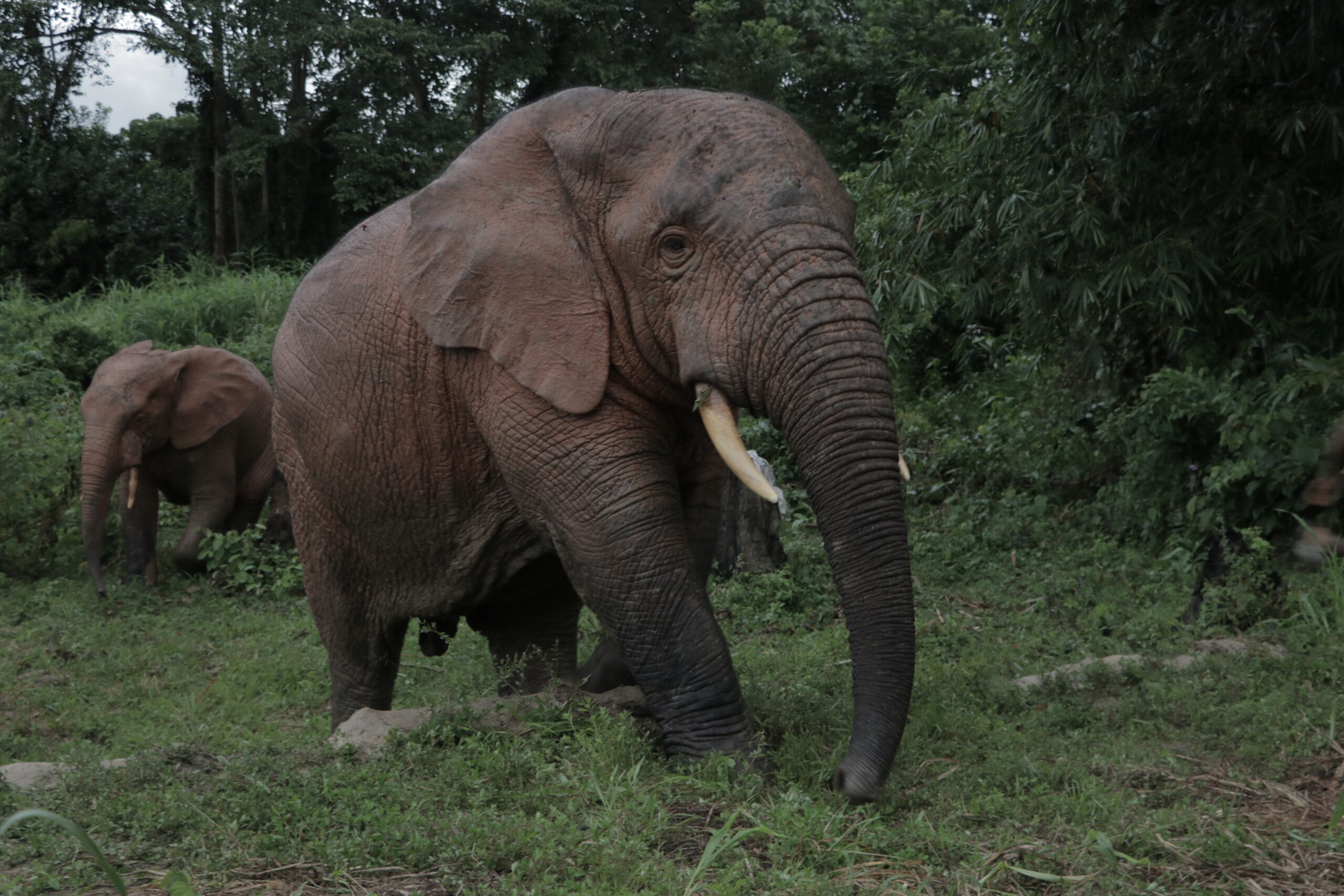


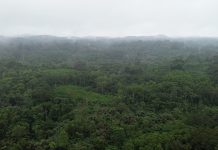
Facebook Comments